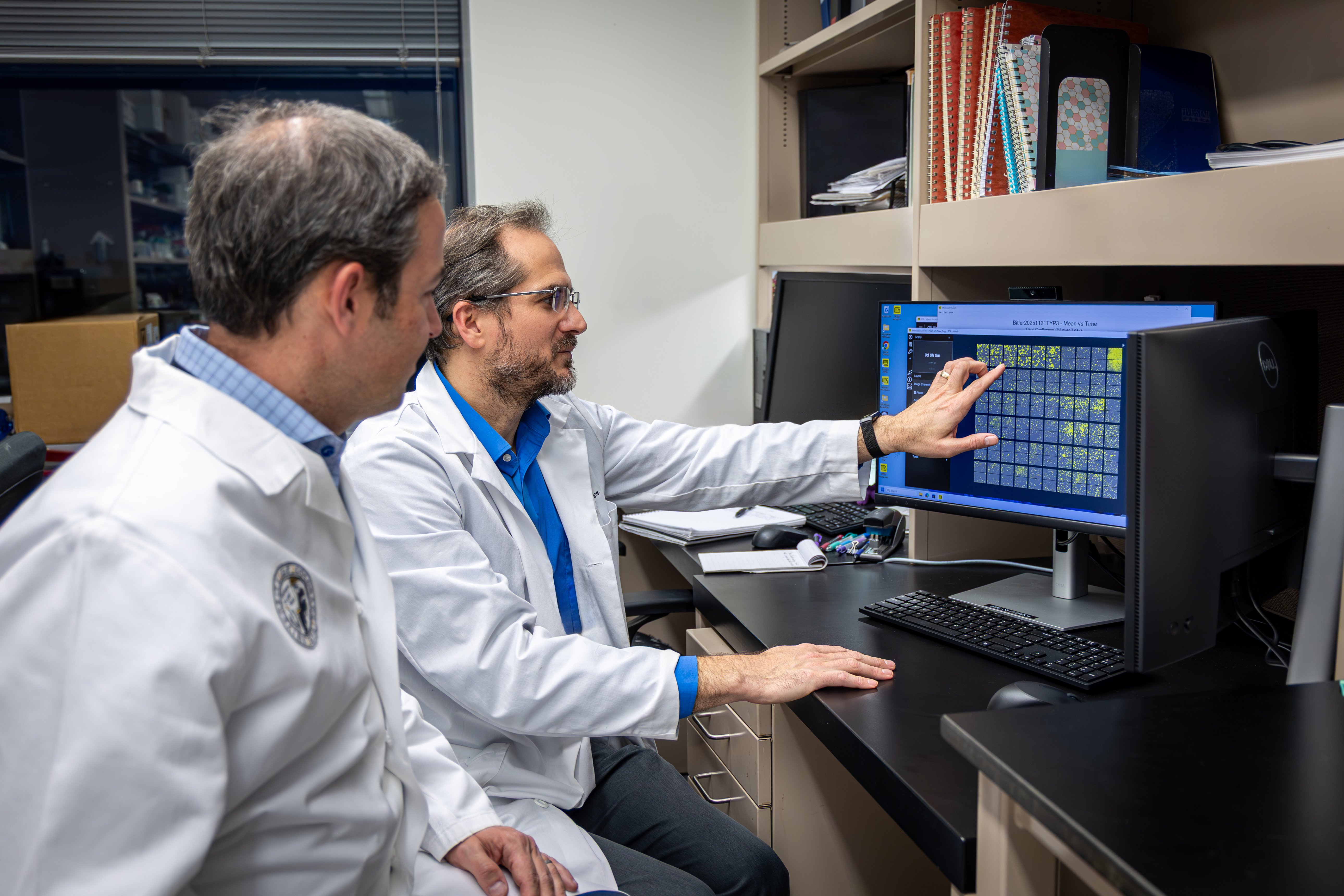How does rheumatoid arthritis begin to appear, and what progress is being made to discover ways to delay or prevent RA?
Rheumatoid arthritis typically shows up for a patient when they start feeling pain, stiffness, swelling in the joints. They go to their healthcare provider who performs tests and confirms the disease. These ‘tests’ can include physical examination of the joints, special blood tests/markers and imaging studies such as x-rays, ultrasound and MRI.
We now know that individuals who eventually develop RA can have abnormalities of these blood markers on average three to five years before they start feeling the joint pain of RA . There are several of these markers, and one of them is called anti-CCP, or antibodies to cyclic citrullinated peptide. Anti-CCP is a pretty good marker, and it can be predictive that they’re going to get rheumatoid arthritis in the future.
If you’re in that phase where you don’t have rheumatoid arthritis but you have these markers, we call it pre-clinical RA or pre-RA. Here at CU, we study that period, which is actually a series of steps toward developing RA, and the big goal is if we figure this out, we can ultimately intervene at the stage when people have these markers but they feel fine – and prevent RA from developing.
It’s similar to how cardiac disease is managed today. We don’t wait for you to have a massive heart attack; rather, we check your cholesterol, blood pressure, whether you have diabetes, and we’re able to intervene at an early stage. We want to do the same thing for rheumatoid arthritis.
Can you explain more about anti-CCP? How predictive of RA is this biomarker?
It is a common autoantibody found in the blood of people with RA. We thought 10 years ago that it was highly predictive of a person’s chances of developing RA and current studies show that on average about 30% of people who have a blood elevation of anti-CCP will go on to get RA within 3-5 years. That isn’t 100%. That is because for some people, the marker will go away, and for others it will stay high, but they won’t take all those extra steps to develop RA. However, 30% is still very high – especially if you think that an average person has less than 1% of developing RA in their lifetime. So, it’s a good marker; it’s just not perfect.
Our team recently finished a multi-year study called StopRA (Strategy for the Prevention of RA) where we took people who had high levels of anti-CCP and gave them hydroxychloroquine, which is used to treat people with rheumatoid arthritis, or a placebo. It is the first prevention research study for RA conducted in the United States.
The results of this study haven’t yet been fully analyzed and published, but preliminarily it looks like this drug does not prevent or delay RA. We are going to fully publish this shortly, but based on what we’ve learned, we are developing new RA prevention studies, In addition, there are other studies worldwide that are working to find anti-rheumatic drugs that work pre-RA, and we’re moving ahead. While it would be great to use an existing drug earlier in the disease, we are probably going to have to find new drugs that target new pathways.
Is there any consistency as to how much time elapses between when an RA biomarker first appears and when a person develops full-blown RA? Has RA been found to shorten lifespans?
On average, that time period is about three to five years. There are certainly longer and shorter times, but that is the general ballpark. Once we see the marker, then we know we’ve got a few years to intervene and make a difference.
RA has been found to shorten lifespans by about five to seven years because of a combination of things. Any kind of inflammatory condition can accelerate heart disease and increase your risk for cancer. When RA hits you, it’s permanent. It becomes a cycle of flareups. People can get it and manage it just fine, but it’s there, it’s a nagging, ongoing trial, and it needs treatment.
A significant recent study led by Kristi Kuhn, MD, PhD, head of the Division of Rheumatology, identified a gut bacterium that can be a trigger of rheumatoid arthritis. Can you talk about that study, in which you collaborated with CU Anschutz colleagues V. Michael Holers, MD, and M. Kristen Demoruelle, MD, PhD?
The study was novel in identifying a bacteria that triggers an immune response that leads to arthritis. Kristi Kuhn and Megan Chriswell (a seventh-year MD/PhD student in the Medical Scientist Training Program) were the key leaders on that study, which fits into our big picture of RA – namely that there are a lot of other things going on, including genetics and environmental factors, that can contribute to someone developing the disease. Since then, there have been other studies of different bugs in the gut (related to RA), but this study was one of the first to show that a bacterium could drive an immune response related to rheumatoid arthritis. Our team found the bug by taking immune reactivity from people who already had rheumatoid arthritis – and testing it. We think that model is really exciting moving forward.
Another model of disease prevention to look at is type 1 diabetes. A couple years ago there was a study, and it led to the drug teplizumab being approved by the Food and Drug Administration to be used to delay the onset of type 1 diabetes in adults and pediatric patients. A lot of that work was done here at CU Anschutz at the Barbara Davis Center for Childhood Diabetes. Immunologically, type 1 diabetes looks a lot like rheumatoid arthritis. If they can find people in that risk state with the autoantibodies – it’s mostly kids at that stage – it’s very predictive and they can intervene. If you can prevent one autoimmune disease – and we hope rheumatoid arthritis will be next – it’s going to help all of them.
The people who get rheumatoid arthritis are so different. Some are kids, some are 25-year-old women, some are middle-aged or 70-year-old men. You’ve got to think all of those people who get the same disease probably have different drivers. So, teasing all of that out is the key – and I think we’ll do it.
So you’re hopeful that, through these study findings, rheumatoid arthritis could be delayed, if not prevented entirely?
Yes, that is our goal. We can envision an approach where we go out into the community, test people for their risk and then refine their ‘personal risk’ and then find a preventive intervention that works for them – an approach we can call ‘precision medicine’. That could mean using drugs or other interventions such as diet or lifestyle changes, that fit an individuals’ particular ‘pathway’ of RA. This may work out to be something like where we perform a blood test plus a stool test to see what your gastrointestinal bugs are. Another angle that M. Kristen Demoruelle, MD, PhD, an associate professor here at CU, is looking at is how some people probably have a driver for rheumatoid arthritis from their lungs, so we collect sputum, and that’s looking quite promising. So, there are lots of fronts on the development of rheumatoid arthritis that we’re looking at.
Is what you are doing in rheumatoid arthritis applicable in other conditions?
We think so. Importantly, while preventing rheumatoid arthritis is our goal, there are other autoimmune diseases that are hopefully going to benefit from our research; these include lupus and psoriatic arthritis. Much like how, as RA researchers, we have benefited from seeing the advances in cardiovascular disease prevention and type 1 diabetes.





